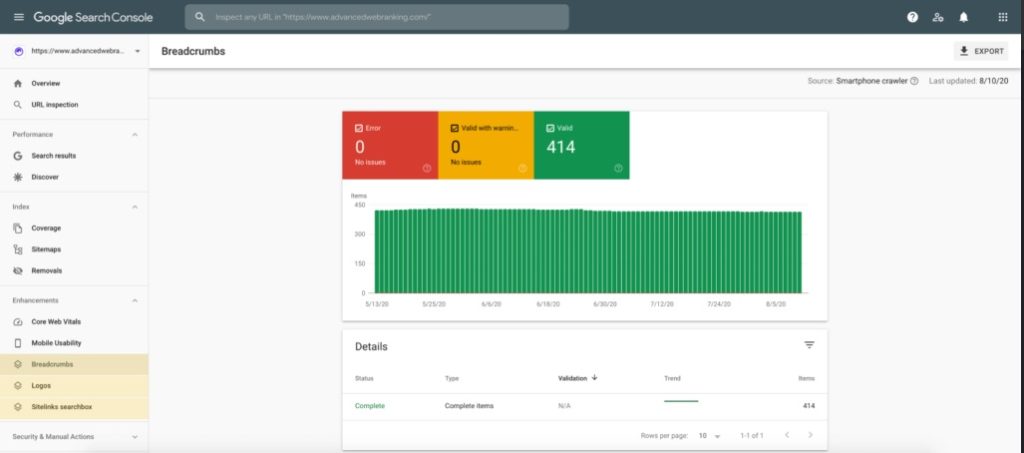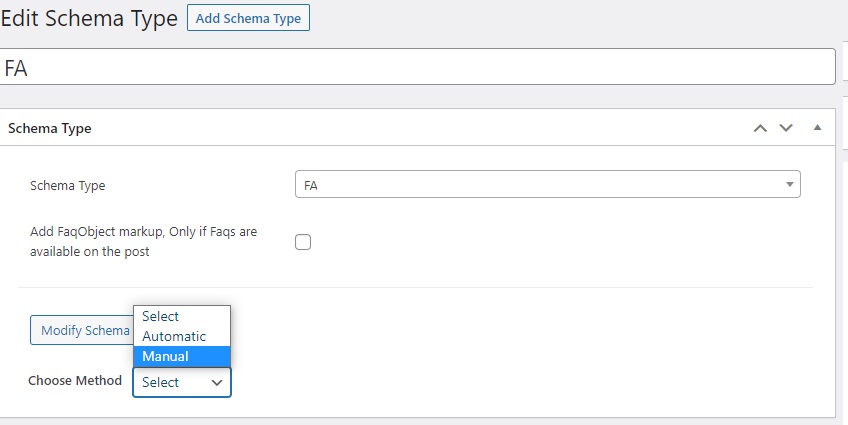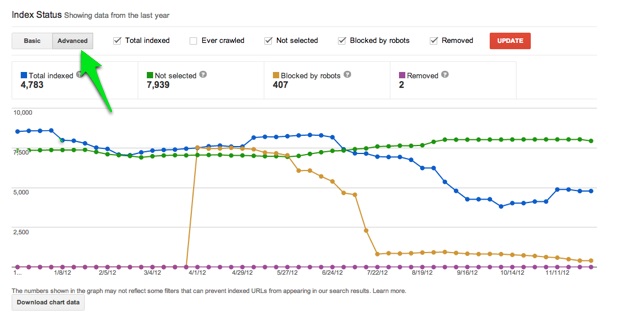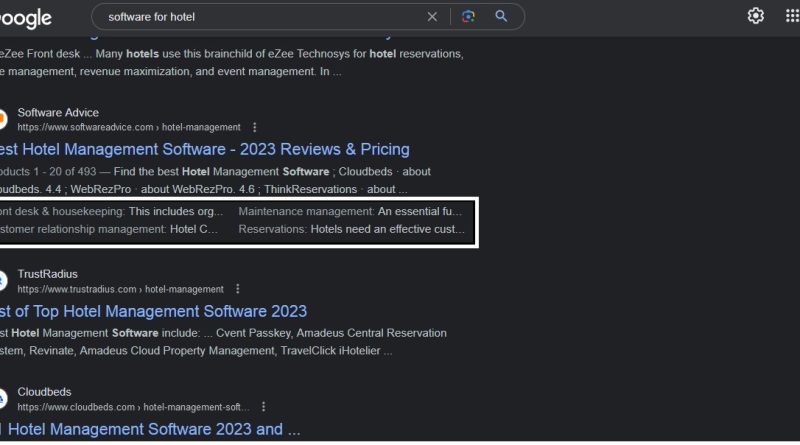Implementing Google rich snippets
In today’s digital landscape, where search engine visibility can make or break a website’s success, understanding and utilizing Google’s rich snippets has become paramount. Google’s rich snippets offer a unique opportunity to enhance your website’s visibility, click-through rates, and overall search engine optimization (SEO) efforts. In this comprehensive guide, we’ll delve into what rich snippets are, how they work, their benefits, and how you can implement them to optimize your content for search engines.
What Are Google Rich Snippets?
Google rich snippets, also known as structured data markup, are a type of code that you can add to your website’s HTML to provide search engines with additional context about your content. This markup helps search engines understand the content on your page more accurately, allowing them to display enhanced search results.
How Do Rich Snippets Work?
Rich snippets work by incorporating schema markup—a standardized vocabulary—to your content. Schema markup provides a way to label different parts of your content, such as product reviews, recipes, events, and more. Search engines then use this markup to generate rich snippets, which are more informative and visually appealing search results.
Benefits of Using Rich Snippets
- Increased Visibility: Rich snippets make your search results stand out, capturing users’ attention and increasing the likelihood of clicks.
- Higher Click-Through Rates: Enhanced search results, such as star ratings, images, and additional information, attract users and encourage them to click on your link.
- Improved User Experience: Users get a glimpse of your content’s relevance before clicking, reducing bounce rates and improving user satisfaction.
- Authority and Credibility: Displaying specific details through rich snippets can establish your website as a credible source of information.
- Better Targeting: Rich snippets help search engines understand your content’s context, leading to better targeting and more accurate search results.
Types of Rich Snippets
- Reviews and Ratings: Display star ratings and review counts for products, services, and more.
- Recipes: Showcase cooking time, calorie count, and reviews for recipes.
- Events: Provide details about upcoming events, including dates, times, and locations.
- Products: Display product prices, availability, and descriptions.
- FAQs: Highlight frequently asked questions and their answers.
Implementing Rich Snippets
- Choose Appropriate Markup: Select the appropriate schema markup type for your content. You can use tools like Google’s Structured Data Markup Helper to assist you.
- Add Markup to HTML: Insert the generated schema markup code into your HTML. Place it around the relevant content.
- Test with Google’s Structured Data Testing Tool: Use this tool to ensure your markup is error-free and displaying correctly.
Best Practices for Rich Snippets
- Accuracy: Ensure your markup accurately represents the content on your page.
- Relevance: Only use markup for content visible on the page. Don’t include hidden or irrelevant information.
- Avoid Misleading Information: Don’t use rich snippets to display false or misleading information.
Google rich snippets offer a powerful way to enhance your website’s visibility, click-through rates, and overall SEO performance. By providing search engines with structured data, you can unlock the potential to stand out in search results and provide users with the information they need. Implementing rich snippets might require some technical effort, but the benefits they bring to your online presence are well worth it.
Incorporate rich snippets into your SEO strategy today and take a step towards maximizing your website’s potential in the competitive digital landscape.
How to do google rich snippets
In the realm of modern SEO, where staying ahead in the search engine rankings is crucial, mastering Google rich snippets has emerged as a game-changer. Rich snippets offer a unique opportunity to enhance your website’s visibility, attract more clicks, and provide users with valuable information right in the search results. This comprehensive guide will walk you through the process of implementing Google rich snippets effectively to optimize your content and boost your search presence.
Understanding Google Rich Snippets
Google rich snippets, also referred to as structured data markup, are a powerful tool that allows you to provide search engines with additional context about your content. By using specific code, you can mark up certain elements of your content to help search engines understand it better, resulting in more informative and visually appealing search results.
Step-by-Step Guide to Implementing Google Rich Snippets
Step 1: Identify Your Content Type
Before you begin, determine the type of content you want to enhance with rich snippets. Common types include product reviews, recipes, events, articles, and FAQs. Identifying the content type will guide your schema markup selection.

Step 2: Choose the Right Schema Markup
Select the appropriate schema markup for your content type. You can find a comprehensive list of schema types on schema.org. Google’s Structured Data Markup Helper can assist in generating the required markup code.
Step 3: Generate Schema Markup Code
Using the chosen markup type, follow these steps:
- Enter the URL of the page you want to mark up.
- Highlight and tag relevant content elements, such as titles, dates, ratings, and descriptions.
- As you tag elements, the tool will generate the necessary schema markup code.
- Once done, click “Create HTML” to get the generated code.
Step 4: Implement Schema Markup
Now that you have the schema markup code:
- Access your website’s content management system or HTML editor.
- Locate the appropriate section of the content where the markup should be inserted.
- Paste the generated schema markup code within the HTML.
Step 5: Validate Your Markup
It’s essential to ensure that your markup is error-free. Google’s Structured Data Testing Tool can help you validate your markup and identify any issues that need correction.
Step 6: Monitor in Google Search Console
After implementing the schema markup, keep an eye on its performance using Google Search Console’s Rich Results report. This tool provides insights into how Google displays your enhanced search results.
Best Practices for Successful Rich Snippets Implementation
- Accuracy Is Key: Ensure that your markup accurately represents the content on your page. Misleading information can lead to penalties.
- Relevance Matters: Only apply schema markup to visible and relevant content on the page. Avoid hidden or unrelated information.
- Stay Updated: As search engines evolve, schema markup requirements may change. Stay updated to maintain optimal performance.
Incorporating Google rich snippets into your SEO strategy is a proven way to elevate your website’s visibility and click-through rates. By providing search engines with structured data, you enable them to showcase your content more effectively to users. The process might involve technical intricacies, but the rewards in terms of improved search rankings and user engagement are well worth the effort.
Start implementing rich snippets today and unlock the true potential of your content in the competitive digital landscape.
Common Mistakes to Avoid in Google Rich Snippets Implementation
Even though Google rich snippets can greatly enhance your search results, there are some common mistakes that you should avoid:

- Overuse of Markup: Applying schema markup to every element on a page can lead to spammy results and potential penalties. Use markup only where it’s relevant and provides valuable information.
- Inaccurate or Misleading Information: Filling in schema markup with incorrect or exaggerated details can harm your website’s credibility. Ensure that the provided information accurately represents your content.
- Ignoring Mobile Compatibility: With the majority of users browsing on mobile devices, make sure that your rich snippets are mobile-friendly and display correctly on various screen sizes.
- Neglecting Testing: Always test your schema markup using tools like Google’s Structured Data Testing Tool to catch errors and ensure proper implementation.
Advanced Tips for Leveraging Google Rich Snippets
- Combine Different Schema Types: In some cases, combining multiple schema types can lead to more comprehensive and visually appealing rich snippets. For instance, you can combine “Review” and “Product” schema to display star ratings and product details together.
- Focus on High-Value Pages: While you can implement rich snippets on various types of content, prioritize pages that are likely to have a higher impact, such as product pages, service offerings, and in-depth articles.
- Monitor and Iterate: Regularly monitor the performance of your rich snippets using tools like Google Search Console. If certain snippets are not yielding the desired results, consider making adjustments and testing different approaches.
- Structured Data Markup Extensions: Google offers specialized markup extensions for certain industries, such as e-commerce or job listings. Utilizing these extensions can provide even more detailed information in search results.
The Future of Google Rich Snippets
As search engines continue to evolve, rich snippets are expected to play an increasingly significant role in search engine optimization. With advancements in natural language processing and AI, search engines may become even more proficient at understanding context and displaying relevant information to users.

Implementing Google rich snippets can be a transformative step for your SEO strategy. By providing search engines with structured data, you not only enhance the appearance of your search results but also provide users with valuable information upfront. Remember, successful implementation requires accuracy, relevance, and a commitment to staying updated with evolving SEO practices.
By following the steps outlined in this guide and avoiding common pitfalls, you’ll be well on your way to harnessing the full potential of Google rich snippets. Start optimizing your content today and watch your search visibility soar in the competitive online landscape.
Understanding the Anatomy of a Rich Snippet
A rich snippet comprises several key elements that work together to provide users with a concise yet informative preview of your content:
- Title: The title of your page or content, often displayed as a clickable link in search results.
- Description: A brief summary of what your content offers, giving users a glimpse into the topic or information they can expect.
- URL: The web address of the page where the content resides.
- Rich Snippet Enhancement: This is where the magic happens. Depending on the type of content and schema markup applied, you might see star ratings, product prices, event details, and other relevant information.
In-Depth Steps for Effective Google Rich Snippets Implementation
Step 1: Structured Data Research
Before diving into implementation, research the various schema types available on schema.org. Each type caters to specific content, such as articles, reviews, products, and more. Choose the schema type that aligns with the content you want to enhance with rich snippets.
Step 2: HTML Markup Integration
- Identify Markup Locations: Determine which sections of your content need markup. This could include product details, review ratings, publication dates, and more.
- Add Schema Markup: Incorporate the schema markup tags around the relevant content within your HTML. For instance, if you’re marking up a review, ensure the markup encapsulates the review’s title, author, date, and content.
Step 3: Structured Data Vocabulary
Understand the vocabulary associated with schema markup. This includes terms like “itemscope,” “itemtype,” “itemprop,” and “itemscope.” These elements define the structure of your markup and help search engines interpret your content accurately.
Step 4: Schema Markup Examples
Depending on the content type, here are a few examples of schema markup you can implement:
- Review Markup: Enhance product or service reviews with rating and review count data. This could significantly boost your click-through rates.
- Product Markup: For e-commerce sites, use product markup to display product details like prices, availability, and user ratings directly in search results.
- Article Markup: If you’re publishing articles, include structured data for elements like headline, date published, and author information.
Step 5: Testing and Validation
Use tools like Google’s Structured Data Testing Tool or the Rich Results Test to ensure that your markup is correctly implemented and error-free. Address any issues that arise during testing.
Advanced Techniques for Rich Snippets
- Breadcrumbs: Implement breadcrumb navigation using schema markup to enhance the display of your website’s structure in search results.
- Local Business Markup: If you’re running a local business, incorporate location-based markup to provide address, contact details, and opening hours.
- Video or Recipe Markup: If your content involves videos or recipes, use schema markup to display video thumbnails or cooking times in search results.
Future Trends and Considerations
As search engines become more sophisticated, expect continuous advancements in how rich snippets are displayed. Voice search, AI-driven results, and even more interactive snippets could be on the horizon.
By mastering the art of implementing Google rich snippets, you’re not just enhancing your content’s appearance in search results—you’re providing users with valuable information upfront, driving higher click-through rates, and establishing your website as a credible source. Stay vigilant about evolving schema markup guidelines, keep testing your snippets, and be ready to adapt to the changing landscape of search engine optimization.
With this comprehensive deep dive, you’re well-equipped to navigate the intricacies of Google rich snippets and leverage their full potential for your online success.






